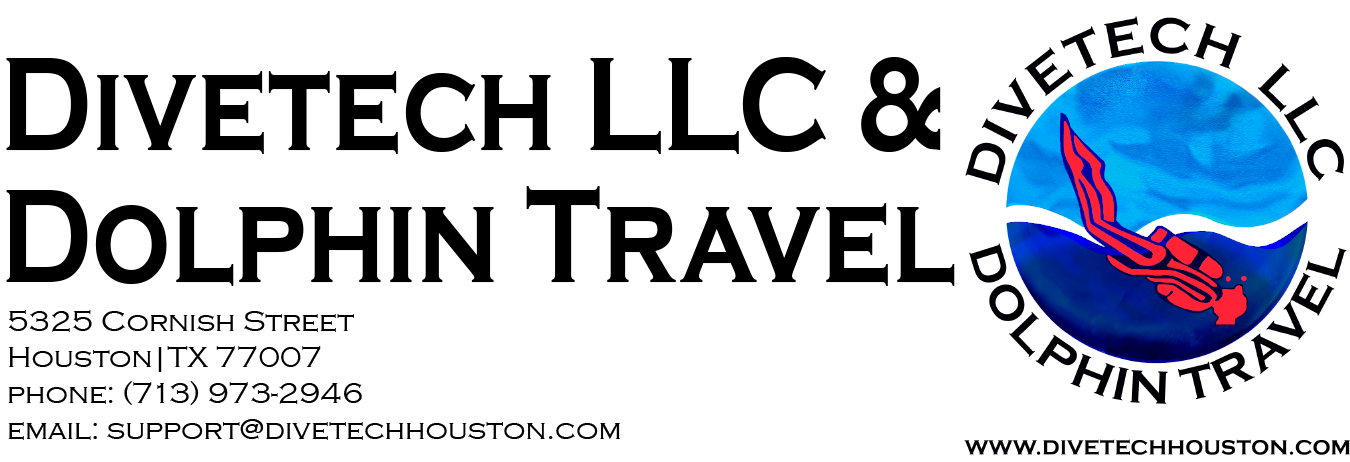It isn’t just dive gear – it’s a life-support system designed to take you places you could otherwise only dream about! The quality of your dive equipment is critical, but it’s just as important to have the right gear for your needs, the knowledge to use it safely, the security in having it fitted to you personally and the safety of having it maintained by knowledgeable experts. All equipment must be serviced at least annually, for your own safety and to maintain the manufacturer’s warranty, so make sure to have your equipment checked by the service professionals at Divetech. See the table below for maintenance/repair services offered:
| EQUIPMENT | TYPE OF SERVICE | DESCRIPTION | PRICE |
|---|---|---|---|
| BUOYANCY COMPENSATING DEVICE | Standard Service | Service inflator mechanism, service valves, clean, check for leaks, and lubricate according to manufacturer's standards. In addition, the BC bladder is cleaned and conditioned internally. | $65.00 Plus Parts |
| REGULATOR | Inspect & Adjust | Check and adjust flow and pressure; clean and lubricate regulator according to manufacturer's standards. Inspect second stages' mouthpieces and intake and exhaust diaphragms; lubricate swivel O-ring on both second stages. | $75.00 Plus Parts |
| Major Overhaul | Complete disassembly of 1st & 2nd stages, acid bath, clean, replace all parts as specified by manufacturer's standards. Set and adjust regulator to original manufacturer's standards. Note: Gauges and computers found to be defective have to be returned to manufacturer for repairs at additional cost. | $125.00 Plus Service Kits and Parts | |
| DIVE COMPUTER | Battery Service | Change O-ring and make sure the seal is correct; run through start up cycle and make sure all settings are back to customer's settings prior to battery replacement. | Call for Availability. Based on Computer. |
| TANK | Hydrostatic Test | Hydrostatic testing is required every 5 years per DOT safety standards. Hydrostatic testing measures the expansion and contraction of High Pressure Cylinders. Once tanks pass the Hydrostatic inspection, they are good for another 5 years, if properly maintained. | $85.00 |
| Visual Inspection | Check valve on tank and replace O-ring on valve; check treads on the cylinder. Inspect inside of tank for contamination and defects. Visual inspections are required every year. | $22.50 | |
| Air Fill | We can fill SCUBA tanks, PAINT BALL tanks and SCBA tanks. You can drop off tanks or have them filled while you wait (an air fill takes about 8-10 minutes). All tanks are hydro filled to minimize air loss due to heating and cooling of tank. We will only fill tanks with current VIP (Visual Inspection) and Hydro (Hydrostatic Test). Scuba tanks filled for divers with valid C-Card certification only. | $19.50 | |
| RUSH CHARGE | Rush request on any service. | $45.00 Per Item | |
What’s the Deal with Regulator Servicing?
A scuba regulator is an amazing piece of life-support equipment. That’s right – life-support equipment. Think about it; your regulator takes inlet air that may vary from 3500 down to 500 pounds per square inch (psi) and reliably delivers it to your mouthpiece at a comfortable pressure and flow rate, automatically adjusting as the back pressure varies from about 15 psi at the surface to around 60 psi on a deep recreational dive. That’s a pretty slick bit of engineering.
To accomplish this impressive feat, the first and second stages of your regulator can contain more than 50 parts including hoses, filters, springs, screws, O-rings, valve seats, pistons and diaphragms…you get the picture. These may be made from a variety of metals, plastics, and polymers that during the course of a dive may be exposed to mechanical stress, salt-water corrosion, and abrasion from sand and dust. Viewed in this light, it makes great sense to have your regulator professionally serviced at the interval recommended by the manufacturer (at a minimum) – which, by the way, is probably a condition of your warranty.
In the shop, a trained technician will completely disassemble the regulator and clean all metal and plastic parts, checking each for signs of wear and replacing as needed. Typically all O-rings and valve seats will be replaced whether they show wear or not. Finally, the regulator will be reassembled and thoroughly tested to ensure that it’s functioning perfectly.
Then, to keep your regulator in good shape between services, follow these simple rules:
Always replace the dust cover on the 1st stage inlet the moment you remove it from the tank. This keeps out water and dust.
As soon as you get back to the dock from every dive, thoroughly rinse the regulator with fresh water. Let water flow through the 2nd stage, but never push the purge valve, as this may let water into the hose and back into the 1st stage.
When you get home, soak the regulator overnight and let it dry completely before storing it.
When storing the regulator, never hang it up or coil the hoses too tightly, since this will stress them and may cause cracking.
If you follow these simple steps, you can count on your regulator for years of service.
